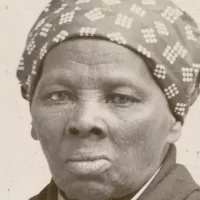Montana, a landlocked state in the Mountain West, is bordered by Idaho, North Dakota, South Dakota, Wyoming, and three Canadian provinces. It is the fourth-largest state by area, yet sparsely populated. Helena is its capital, while Billings is the most populous city. The western part is mountainous, while the eastern part features prairies and badlands.
1900: Decline in Asian population
By 1900, nearly half of Montana's Asian population had left due to increasingly negative public opinion.
1900: Temperature increase since 1900
Since 1900, the average temperature in Montana has increased by almost 2.5 °F (1.3 °C), a rate higher than the continental U.S. average.
1902: Mary MacLane's Memoir
In 1902, pioneering feminist author Mary MacLane gained international fame with her memoir, The Story of Mary MacLane, detailing three months of her life in Butte.
1902: Reclamation Act Passed
In 1902, the Reclamation Act was enacted, facilitating the construction of irrigation projects in the river valleys of eastern Montana.
1907: Charles Nelson Pray Served in U.S. House of Representatives
Charles Nelson Pray served in the U.S. House of Representatives from 1907 to 1913.
1909: Judicial Elections Become Nonpartisan
Beginning in 1909, elections for judicial office in Montana became nonpartisan.
1909: Enlarged Homestead Act Passed
In 1909, the U.S. Congress passed the Enlarged Homestead Act, which increased the amount of free land available to each family from 160 to 320 acres.
1910: Homestead Claims Filed on Over Five Million Acres
By 1910, homesteaders had filed claims on over five million acres of land in Montana.
1910: 1910 Census and Reapportionment
Following the 1910 census and reapportionment, Montana received a second representative in 1913.
1911: Nonpartisan Law Struck Down
In 1911, the Montana Supreme Court struck down the nonpartisan law on technical grounds.
1912: Homestead Claim Time Reduced
In 1912, the time required to "prove up" on a homestead claim was reduced to three years.
1913: Charles Nelson Pray's Term Ended
Charles Nelson Pray's Term Ended in the U.S. House of Representatives from 1907 to 1913.
1913: Montana Receives Second Representative
In 1913, Montana received a second representative in the United States House of Representatives, following the 1910 census and reapportionment.
1913: Thomas J. Walsh Served as Senator
Thomas J. Walsh served as a Senator for Montana from 1913 to 1933.
1914: Women Granted the Vote
In 1914, Montana granted women the right to vote.
1916: Jeannette Rankin Elected to Congress
In 1916, Jeannette Rankin was elected to the U.S. House of Representatives, becoming the first woman to hold national office in the United States.
1916: Establishment of Rocky Boy's Indian Reservation
In 1916, the Rocky Boy's Indian Reservation was established near Box Elder for the Chippewa-Cree.
1916: Stock-Raising Homestead Act Passed
In 1916, the Stock-Raising Homestead Act was enacted, allowing homesteads of 640 acres in areas unsuitable for irrigation.
June 1917: Speculator Mine Disaster
In June 1917, the Speculator Mine disaster occurred, leading to increased labor unrest and the arrival of Industrial Workers of the World organizer Frank Little in Butte.
June 1917: Espionage Act Passed
In June 1917, the U.S. Congress passed the Espionage Act of 1917, later extended by the Sedition Act of 1918.
August 1, 1917: Frank Little Lynched
On August 1, 1917, Industrial Workers of the World (IWW) organizer Frank Little was lynched in Butte, Montana, by masked vigilantes for his anti-war rhetoric. This event led to the deployment of the National Guard to restore order.
1917: Jeannette Rankin Votes Against War Declaration
In 1917, Jeannette Rankin, Montana's representative and the first woman in Congress, voted against the United States' declaration of war, facing widespread criticism.
1917: Devastating Drought Begins
In 1917, Montana began to experience a severe drought that lasted until 1921, proving devastating for farmers.
1917: Peak Homesteading Year Begins
In 1917, homesteading reached its peak, with the Great Falls land office alone processing more than 14,000 new homesteads each year.
February 1918: Montana Sedition Act Passed
In February 1918, the Montana legislature passed the Montana Sedition Act, which criminalized criticism of the U.S. government, military, or symbols.
1918: Montanans in WWI
In 1917-1918, approximately 40,000 Montanans, 10% of the state's population, served in the armed forces during World War I. Montana provided over 10,000 cavalry horses through Miles City's Remount station.
1918: Rising Emotions and Influenza Epidemic
In 1918, emotions rose due to legislative action, and the influenza epidemic claimed over 5,000 lives in Montana. German language books were burned and civil liberties were suppressed.
1918: Peak Homesteading Year Continues
In 1918, the Great Falls land office continued to process more than 14,000 new homesteads each year, reflecting the peak of homesteading in the region.
1919: Montana Moves to District Elections
Beginning in 1919, Montana moved to district, rather than at-large, elections for its two House members, creating Montana's 1st and 2nd congressional districts.
1919: Number of Supreme Court Justices Increased
In 1919, the Montana legislature increased the number of Supreme Court justices to five.
1919: Significant Drop Following Drought
In 1919, there was a significant drop in homestead filings due to the ongoing drought conditions.
1921: Devastating Drought Ends
In 1921, the devastating drought that started in 1917 came to an end, leaving many farmers bankrupt and causing significant economic hardship.
1923: Burton K. Wheeler Served as Senator
Burton K. Wheeler served as a Senator for Montana from 1923 to 1947.
1923: Over 93 Million Acres Farmed
By 1923, over 93 million acres of land in Montana were being farmed.
1933: Thomas J. Walsh's Death
Thomas J. Walsh, who served as a Senator for Montana from 1913, died in 1933.
1934: Indian Reorganization Act
The Indian Reorganization Act (1934) enabled the creation of seven Indian reservations, encompassing 11 federally recognized tribal nations, in Montana.
1935: New Nonpartisan Law Enacted
In 1935, a new law was enacted which barred political parties from endorsing, making contributions to, or making expenditures on behalf of or against judicial candidates.
July 5, 1937: Record high temperature at Medicine Lake
On July 5, 1937, Medicine Lake recorded a temperature of 117 °F (47.2 °C), marking one of the highest summer temperatures observed in Montana.
1940: Jeannette Rankin Re-elected to Congress
In 1940, Jeannette Rankin was re-elected to Congress, continuing her political career.
December 8, 1941: US Enters World War II
On December 8, 1941, the U.S. entered World War II after the attack on Pearl Harbor, leading many Montanans to enlist in the military. Montana became a training ground for the First Special Service Force and hosted air bases for preparing planes to be sent to the Soviet Union.
1941: Rankin Votes Against WWII Declaration
In 1941, Jeannette Rankin voted against the United States' declaration of war after the attack on Pearl Harbor, becoming the only dissenting vote. This action led to public outcry and required police protection for her.
1942: Camp Rimini Established
In 1942, the U.S. Army established Camp Rimini near Helena for training sled dogs in winter conditions.
1947: End of Burton K. Wheeler's Senate Term
Burton K. Wheeler finished his term as a Senator for Montana in 1947, after serving since 1923.
1947: Military Air Transport Service
In 1947, Montana became host to U.S. Air Force Military Air Transport Service for airlift training in C-54 Skymasters.
1948: Last Republican Senator Before 1988
Before 1988, the last time Montana had a Republican Senator was in 1948.
1952: Start of Republican Dominance in Presidential Elections
Since 1952, Montana has voted for the Republican nominee in all but two presidential elections.
1953: Strategic Air Command Air and Missile Forces Based at Malmstrom AFB
In 1953, Strategic Air Command air and missile forces were based at Malmstrom Air Force Base in Great Falls. The base also hosted the 29th Fighter Interceptor Squadron, Air Defense Command.
January 20, 1954: Coldest temperature recorded in Montana
On January 20, 1954, a temperature of -70 °F (-56.7 °C) was recorded at a gold mining camp near Rogers Pass, Montana, marking the coldest temperature ever recorded in the contiguous United States. On the same date, Helena recorded a low of -36 °F (-37.8 °C).
December 1959: Malmstrom AFB Selected for Minuteman I
In December 1959, Malmstrom AFB was chosen as the home of the new Minuteman I intercontinental ballistic missile.
1959: Lee Enterprises Buys Newspapers
In 1959, Lee Enterprises bought several Montana newspapers, changing the media landscape from the era when each copper company had its own newspaper.
1961: James F. Battin Served in U.S. House of Representatives
James F. Battin served in the U.S. House of Representatives from 1961 to 1969.
1961: Lee Metcalf Served as Senator
Lee Metcalf served as a Senator for Montana from 1961 to 1978.
1962: Minuteman I Missiles Operational
In early 1962, the first operational Minuteman I missiles were in place and ready at Malmstrom AFB. Later in 1962, the missiles played a key role in the Cuban Missile Crisis.
1964: Last Democratic Governor Before 1988
Before 1988, the last time Montana had a Democratic governor was in 1964.
1964: Montana, High, Wide, and Handsome Published
In 1964, Joseph Kinsey Howard's book, Montana, High, Wide, and Handsome, was published.
1964: Wilderness Act Established
In 1964, the Wilderness Act established the National Wilderness Preservation System, which includes approximately 3,300,000 acres of wilderness in 12 separate areas in Montana.
1968: 29th Fighter Interceptor Squadron Ended
From 1953 to 1968, the 29th Fighter Interceptor Squadron, Air Defense Command was hosted at Malmstrom Air Force Base.
1968: Start of Democratic Party Dominance
From 1968 through 1988, Montana was dominated by the Democratic Party.
1969: James F. Battin's Term Ended
James F. Battin's Term Ended in the U.S. House of Representatives from 1961 to 1969.
1971: Constitutional Convention Approved
In 1971, Montana voters approved the call for a state constitutional convention.
January 15, 1972: Extreme temperature change in Loma
On January 15, 1972, Loma experienced the most extreme recorded temperature change in a 24-hour period in the United States, rising from -54 °F to 49 °F (-47.8 °C to 9.4 °C) due to a chinook wind.
June 20, 1972: New Constitution Ratified
On June 20, 1972, Montana's new constitution was declared ratified after being narrowly approved by voters.
1972: Term of Office Lengthened
In 1972, the Montana constitution lengthened the term of office for Supreme Court justices to eight years and established the minimum number of justices at five.
1972: Amendments to the 1889 Constitution
Montana voters amended the 1889 constitution 37 times between 1889 and 1972.
1972: Constitution Amended
The 1972 Montana constitution has been amended 31 times as of 2015.
1972: Constitutional Convention Requirement
The 1972 Montana constitution requires that voters determine every 20 years whether to hold a new constitutional convention.
1973: Montana Water Use Act of 1973
The Montana Water Court adjudicates water rights claims under the Montana Water Use Act of 1973.
1974: Montana Youth Court Act
In 1974, Montana Youth Courts were established by the Montana Youth Court Act.
1974: State Severance Tax on Coal
In 1974, Montana established a state severance tax on coal, which varied from 20 to 30%.
1974: Establishment of Reclamation Trust and Restoration of Sovereign Immunity
In 1974, major amendments to the 1972 constitution included the establishment of a reclamation trust and the restoration of sovereign immunity, when such immunity has been approved by a two-thirds vote in each house.
1975: Montana Worker's Compensation Court Established
In 1975, the Montana Worker's Compensation Court was established by the Montana Workers' Compensation Act. The court consists of a single judge appointed by the governor, and it has statewide jurisdiction to hear cases arising under the Montana Workers' Compensation Act.
1976: Establishment of Coal Tax Trust Fund
In 1976, a coal tax trust fund, funded by a tax on coal extraction, was established as a major amendment to the 1972 constitution.
1976: Missouri River Designated National Wild and Scenic River
In 1976, the section of the Missouri River between Fort Benton and the Fred Robinson Bridge at the western boundary of Fort Peck Reservoir was designated a National Wild and Scenic River.
1978: County Government Review
In 1978, the mandatory decennial review of county government was converted into a voluntary one, to be approved or disallowed by residents in each county, as an amendment to the 1972 constitution.
1978: Max Baucus Served as Senator
Max Baucus served as a Senator for Montana from 1978 to 2014.
1978: Paul G. Hatfield Served as U.S. Senator
Paul G. Hatfield served as an appointed U.S. Senator in 1978.
1979: Montana Water Court Act of 1979
In 1979, the Montana Water Court was established by the Montana Water Court Act. The Water Court consists of a chief water judge, four district water judges and 12 permanent special masters.
1979: Legislature Increased Number of Justices
In 1979, the Montana legislature increased the number of Supreme Court justices by two, following authorization in the 1972 constitution.
1980: Growth of Native American population
Between 1980 and 1990, Montana's Native American population grew by 27.9%, while the state's entire population rose by 1.6%.
1981: Commonwealth Edison Co. v. Montana
In 1981, the Supreme Court of the United States upheld Montana's 1974 state severance tax on coal in the case Commonwealth Edison Co. v. Montana, 453 U.S. 609.
1985: Resort Tax Law Passed
In 1985, the Montana Legislature passed a law allowing towns with fewer than 5,500 residents and unincorporated communities with fewer than 2,500 to levy a resort tax if more than half the community's income came from tourism. The resort tax is a sales tax that applies to hotels, motels and other lodging and camping facilities; restaurants, fast-food stores, and other food service establishments; taverns, bars, night clubs, lounges, or other public establishments that serve alcohol; as well as destination ski resorts or other destination recreational facilities.
1988: Republican Governor Elected
In 1988, Montana elected a Republican governor for the first time since 1964.
1988: Public Assistance Provision
In 1988, the provision of public assistance was converted from a mandatory civil right to a non-fundamental legislative prerogative as an amendment to the 1972 constitution.
1990: Montana Loses Second House District
After the 1990 census reapportionment, Montana had only one representative in the U.S. House, losing its second district.
1990: Native American population growth
Between 1980 and 1990, Montana's Native American population grew by 27.9%.
1990: Tribal diversity in Montana
In 1990 census data indicated that people from as many as 275 different tribes lived in Montana.
1990: Voters Turned Down Constitutional Convention
In 1990, Montana voters turned down a new constitutional convention, with 84 percent voting no.
1992: Bill Clinton Wins Presidential Election in Montana
In 1992, Bill Clinton won a plurality victory in Montana, marking the last time the state supported a Democrat for president.
1992: Term Limits Implemented
In 1992, Montana voters approved a constitutional amendment implementing term limits for certain statewide elected executive branch offices and for members of the Montana Legislature.
1992: A River Runs Through It film
In 1992, Robert Redford's film adaptation of Norman Maclean's novel, A River Runs Through It, was filmed in Montana, bringing national attention to fly fishing and the state.
1994: Republican Party Takes Control of State Legislature
In 1994, the Republican Party took control of both chambers of the Montana state legislature.
1996: Republican Control of Congressional Seats
Since 1996, Montana's congressional seats have been Republican.
1999: Passage of the Indian Education for All Act
In 1999, the Indian Education for All Act was passed in Montana to provide funding for the preservation of American Indian cultural integrity in education.
2000: English speakers in Montana
According to the 2000 census, 94.8% of the population aged five and older in Montana spoke English at home.
2000: Increase in Native American Population
Between 2000 and 2010, Montana's Native American population increased by 18.5 percent.
2002: The Slaughter Rule Film
In 2002, the independent film The Slaughter Rule, which dramatizes six-man football teams in Montana's "Class C" high schools, was released.
2004: Split Party Control in State Legislature
From 2004 to 2010, the two chambers of Montana's state legislature had split party control.
2004: Lawsuit due to lack of funding
In 2004, Montana was sued due to lack of funding for the Indian Education for All Act, leading to increased state support of the program.
2004: New Constitutional Rights and Prohibition on Same-Sex Marriage
In 2004, a new constitutional right to hunt and fish, and a now-defunct prohibition on same-sex marriage, were approved as amendments to the 1972 constitution.
2004: Legislative Districts Reapportioned
The 2004 reapportionment produced more swing districts, leading to a brief period of Democratic legislative majorities in Montana.
2005: Brian Morris Became Associate Justice of Montana Supreme Court
In 2005, Brian Morris became an associate justice of the Montana Supreme Court, serving until 2013.
May 2006: Pardons Issued for Sedition Act Convictions
In May 2006, Governor Brian Schweitzer posthumously issued full pardons for all those convicted of violating the Montana Sedition Act.
2006: End of Split-Ticket Voting Pattern
Through 2006, the pattern of split-ticket voting and divided government persisted in Montana.
July 2007: Hottest month recorded in Montana
During July 2007, Montana experienced its hottest month ever recorded, with many cities setting heat records.
August 2007: Request for USS Montana Submarine
In August 2007, Senator Jon Tester requested that a submarine be christened USS Montana to honor the state.
2007: South Dakota's similar legislation
In 2007, South Dakota passed similar legislation to Montana's Indian Education for All Act.
2008: John McCain Wins Presidential Election in Montana
In the 2008 presidential election, Montana was considered a swing state and was ultimately won by Republican John McCain by a narrow margin of two percent.
2009: Native Americans living in urban areas
As of 2009, almost two-thirds of Native Americans in Montana live in urban areas.
2009: Students speaking languages other than English
In 2009, the United States Department of Education estimated that 5,274 students in Montana spoke a language at home other than English, including Native American languages, German, Spanish, Russian, and Chinese.
2010: Media Market Ranking
As of 2010, Missoula was the 166th largest media market in the United States as ranked by Nielsen Media Research, while Billings was 170th, Great Falls was 190th, the Butte/Bozeman area 191st, and Helena was 206th.
2010: Largest European ancestry groups in Montana
As of 2010, the largest European ancestry groups in Montana were German (27.0%), Irish (14.8%), English (12.6%), Norwegian (10.9%), French (4.7%), and Italian (3.4%).
2010: Population concentration
From 2010 to 2020, population growth was mainly concentrated in Montana's seven largest counties, with the highest percentage growth in Gallatin County, which had a 32.9% increase in its population.
2010: Voters Turned Down Constitutional Convention
In 2010, Montana voters again turned down a new constitutional convention, with 58.6 percent voting no.
2010: Prohibition on New Taxes on Real Property
In 2010, a prohibition on new taxes on the sale or transfer of real property was added to the 1972 constitution.
2010: 2010 U.S. census
In 2010, according to the U.S. census, Billings, Missoula, Great Falls, Bozeman, Butte, Helena and Kalispell were the seven largest communities in Montana.
2010: Republican Control Returns to State Legislature
In 2010, mid-term elections decisively returned both branches of Montana's state legislature to Republican control.
2010: Percentage of Native American residents in Montana's largest cities
In 2010, of Montana's 20 largest cities, Polson (15.7%), Havre (13.0%), Great Falls (5.0%), Billings (4.4%), and Anaconda (3.1%) had the greatest percentages of Native American residents.
2010: Christian Denominations in Montana
In 2010, the largest Christian denominations in Montana were the Catholic Church (127,612 adherents), the Church of Jesus Christ of Latter-day Saints (46,484 adherents), Evangelical Lutheran Church in America (38,665 adherents), and non-denominational evangelical Protestants (27,370 adherents).
2010: Dakota language speakers in Montana
In 2010, there were approximately 700 Dakota language speakers in Montana.
2010: Reported membership in Native American tribes
In the 2010 census, many Montanans reported belonging to various Native American tribes, with the largest being the Blackfeet, Crow, Cheyenne, Assiniboine Sioux, Chippewa Cree, and Confederated Salish and Kootenai Tribes.
2010: Affordable Care Act shepherded through Senate
Max Baucus, Montana's Senator, shepherded the Patient Protection and Affordable Care Act through the Senate in 2010.
2010: Montana Fails to Regain Second Seat
Montana failed to regain its second seat in the House in 2010, despite population growth.
2010: Native American population in Montana
Ranked 45th in population (by the 2010 census) Montana is 19th in native people, who are 6.5% of the state's population—the sixth-highest percentage of all fifty states.
December 2011: Estimated one million population mark
Sometime between November and December 2011, Montana was estimated to have hit the one million population mark.
2011: Microbrewing Ranking
In 2011, Montana ranked third in the nation in the number of craft breweries per capita.
2011: Spanish-language speakers
In 2011, there were about 13,040 Spanish-language speakers in Montana, representing 1.4% of the population.
January 3, 2012: Montana's Population
On January 3, 2012, the Census and Economic Information Center (CEIC) estimated Montana had hit the one million population mark sometime between November and December 2011.
2012: Judicial Nonpartisan Election Law Struck Down
In 2012, the U.S. Supreme Court struck down Montana's judicial nonpartisan election law in American Tradition Partnership, Inc. v. Bullock, 567 U.S. ____ (Sup.Ct. 2012).
August 2013: FCC-Licensed Radio Stations
As of August 2013, there were 527 FCC-licensed FM radio stations and 114 AM stations broadcasting in Montana.
2013: Other languages spoken in Montana as of 2013
As of 2013, other languages spoken in Montana included Assiniboine, Blackfoot, Cheyenne, Plains Cree, Crow, German Hutterite, Gros Ventre, Kalispel-Pend d'Oreille, Kutenai, and Lakota.
2013: Population based on 2013 census numbers
Based on 2013 census numbers, the seven largest communities contain 35 percent of Montana's population, and the counties in which they are located are home to 62 percent of the state's population.
2013: Billings Clinic Named Safest Hospital
In 2013, AARP The Magazine named the Billings Clinic one of the safest hospitals in the United States.
2013: Brian Morris Served as Associate Justice of Montana Supreme Court Ended
In 2013, Brian Morris served as associate justice of the Montana Supreme Court from 2005 ended.
2013: Bozeman Airport Busiest
In the spring of 2013, Bozeman Yellowstone International Airport became the busiest airport in the state of Montana, surpassing Billings Logan International Airport.
2014: Least Obese State Ranking
According to the 2014 Gallup Poll, Montana was ranked as the least obese state in the U.S., with an obesity rate of 19.6%.
2014: Religious affiliations in Montana
According to the Pew Research Center in 2014, Christianity was the predominant religion in Montana, with 65% of the adult population identifying as Christian.
2014: Irreligious Population
In 2014, 30% of Montana's population identified as irreligious.
2014: Steve Daines Elected as U.S. Senator
In 2014, Steve Daines was first elected as a U.S. Senator for Montana.
2014: End of Max Baucus' Senate Term
Max Baucus finished his term as a Senator for Montana in 2014, after serving since 1978.
2014: Spending on State Supreme Court Races Increases
Spending on state supreme court races exponentially increased to $1.6 million in 2014, setting a new record.
September 3, 2015: USS Montana Submarine Announced
On September 3, 2015, Secretary of the Navy Ray Mabus announced that Virginia Class attack submarine SSN-794 will be named USS Montana, becoming the second commissioned warship to bear the name.
2015: Constitution Amended
As of 2015, The 1972 Montana constitution has been amended 31 times.
2015: Percentage of U.S. military veterans living in Montana
In the 2015 United States census estimates, Montana had the second-highest percentage of U.S. military veterans living there, with roughly 12 percent of its population over 18 being veterans.
2015: Steve Daines Becomes Senator
Steve Daines becomes Senator of Montana since 2015.
2016: New Constitutional Rights for Victims of Crime
In 2016, extensive new constitutional rights for victims of crime were approved in Montana.
2016: Spending on State Supreme Court Races Increases Further
In 2016, spending on state supreme court races increased to more than $1.6 million, setting a new record.
2017: Economic Output of Fishing
In 2017, nonresidents generated $4.7 billion in economic output in Montana, with $1.3 billion generated by visitor groups participating in guided fishing experiences.
2018: Non-Resident Visitors
In 2018, approximately 12.2 million non-residents visited Montana, while the population was estimated to be 1.06 million, highlighting the importance of the resort tax for maintaining infrastructure.
December 2019: Federal recognition of the Little Shell Tribe
In December 2019, the Little Shell Tribe of Chippewa Indians of Great Falls was recognized by the federal government.
2019: Tourism Boom
In 2019, Montana's tourism sector experienced rapid growth, attracting 12.6 million tourists to the state.
April 2020: Highest Unemployment Rate
In April 2020, Montana's unemployment rate reached its highest at 12.0%.
2020: Race and ethnicity data from the 2020 census
According to the 2020 census, 88.9% of Montana's population was White, 6.7% American Indian and Alaska Native, 4.1% Hispanics and Latinos of any race, 0.9% Asian, 0.6% Black or African American, 0.1% Native Hawaiian and other Pacific Islander, and 2.8% from two or more races.
2020: Religious affiliations in Montana in 2020
At the 2020 Public Religion Research Institute's (PRRI) study, 57% of the adult population in Montana were Christian.
2020: Montana's population in 2020
In 2020 census, Montana's population was 1,084,225. During the first decade of the new century, growth was mainly concentrated in Montana's seven largest counties, with the highest percentage growth in Gallatin County, which had a 32.9% increase in its population from 2010 to 2020. The city having the largest percentage growth was Kalispell, with 40.1%, and the city with the largest increase in actual residents was Billings, with an increase in population of 12,946 from 2010 to 2020.
2020: Self-identified Native American population
In 2020, 67,612 people in Montana self-identified as Native American.
2020: Greg Gianforte Elected Governor
In 2020, Greg Gianforte, a Republican, was elected as the governor of Montana.
2020: Steve Daines Reelected as U.S. Senator
In 2020, Steve Daines was reelected as a U.S. Senator for Montana.
2020: Christian Denominations in Montana
In 2020, the largest Christian denominations in Montana were the Catholic Church (112,389 adherents), non-denominational Protestantism (54,540 adherents), and the Church of Jesus Christ of Latter-day Saints (50,552 adherents).
2020: Montana Ranked as 21st Easiest State to Vote In
In a 2020 study, Montana was ranked as the 21st easiest state for citizens to vote in.
2020: Irreligious Population
In a separate study from 2020, it was found that 34% of Montana's population was irreligious.
2020: Montana Regains House Seat
In the reapportionment following the 2020 census, Montana regained a House seat, increasing the state's number of representatives in the House to two.
2022: Non-Christian Population Study
A PRRI study in 2022 showed that among Montana's non-Christian population, the unaffiliated made up 32%, New Age spirituality represented 2%, Judaism 1%, Buddhism 1%, and other faiths accounted for 2% of the state's population.
2022: Homeless population in Montana
According to HUD's 2022 Annual Homeless Assessment Report, there were an estimated 1,585 homeless people in Montana.
2022: Montana's Gross Domestic Product and Per Capita Income
As of 2022, the U.S. Bureau of Economic Analysis estimated Montana's Gross Domestic Product was $67.072 billion (47th in the nation) and per capita personal income was $60,984 (28th in the nation).
March 2023: Lowest Unemployment Rate
In March 2023, Montana's unemployment rate reached its lowest at 2.5%.
May 2023: TikTok and Temu Ban
In May 2023, Montana became the first US state to ban the social media app TikTok and online marketplace Temu.
July 1, 2023: Montana Population
On July 1, 2023, the United States Census Bureau stated that the population of Montana was 1,132,812, a 4.5% increase since the 2020 census.
2023: Suicide Rate
In 2023, Montana had a suicide rate of 26.6 per 100,000, the second highest in the U.S., only behind Alaska.
2023: Montana's Second Representative Returns
Starting in 2023, Montana had two representatives in the House after a thirty-year break.
2023: Change in Congressional Seat Representation
Until 2023, Montana had one at-large congressional district. Now there are two congressional seats.
November 2024: State Unemployment Rate
As of November 2024, Montana's unemployment rate is 3.2%.
2024: Montana Elections
Following the 2024 Montana elections, Republicans control the Montana Senate 32 to 18, and the Montana House of Representatives holds a 57 to 43 Republican majority.
2024: Senator Jon Tester Loses Reelection
In 2024, Democratic U.S. Senator Jon Tester lost reelection, leading to Montana having no Democratic statewide officeholders.
2024: Trauma I Hospital Verification
In 2024, Intermountain Health's St. Vincent Regional Hospital in Billings also received verification as a Trauma I hospital.
2024: Tim Sheehy Elected as U.S. Senator
In 2024, Tim Sheehy was elected as U.S. Senator for Montana.
2024: Constitutional Provision Codifying Abortion Rights
In 2024, a constitutional provision codifying abortion rights was added to the 1972 constitution.
January 3, 2025: Loss of Jon Tester's Senate Seat
On January 3, 2025, Montana was left with no Democratic statewide officeholders after Jon Tester lost reelection in 2024 and subsequently ceded his seat.
2025: Tim Sheehy Becomes Senator
Tim Sheehy becomes Senator of Montana since 2025.
Mentioned in this timeline
TikTok also known as Douyin in China is a social...

Bill Clinton the nd U S President - served as...
The Affordable Care Act ACA also known as Obamacare is...

A submarine is a watercraft capable of independent operation underwater...
Germany officially the Federal Republic of Germany is a Western...
China officially the People's Republic of China PRC is an...
Trending

6 days ago Hugh Jackman & Kate Hudson surprise NYC bar with Neil Diamond tribute.

12 days ago JoJo Siwa and Chris Hughes: Relationship timeline and potential break-up rumors.

6 months ago Mikal Bridges trade: Knicks star possibly moving to Warriors for bench support.

6 months ago Sean Connery's Villa Listed, Terrifying Executives, and MCU's Future Movies

28 days ago Jordan Clarkson's Viral Meltdown: Knicks Teammates Laugh as Hart Responds to Stat Sheet Rip

7 days ago Josh Hart shines with increased workload, making a case to stay in lineup.
Popular
Matt and Ross Duffer known as the Duffer Brothers are...

Candace Owens is an American conservative political commentator and author...

Ilhan Omar is an American politician currently serving as the...

XXXTentacion born Jahseh Dwayne Ricardo Onfroy was a controversial yet...

Tom Cotton is an American politician and Army veteran currently...

Harriet Tubman was a pivotal American abolitionist and social activist...

